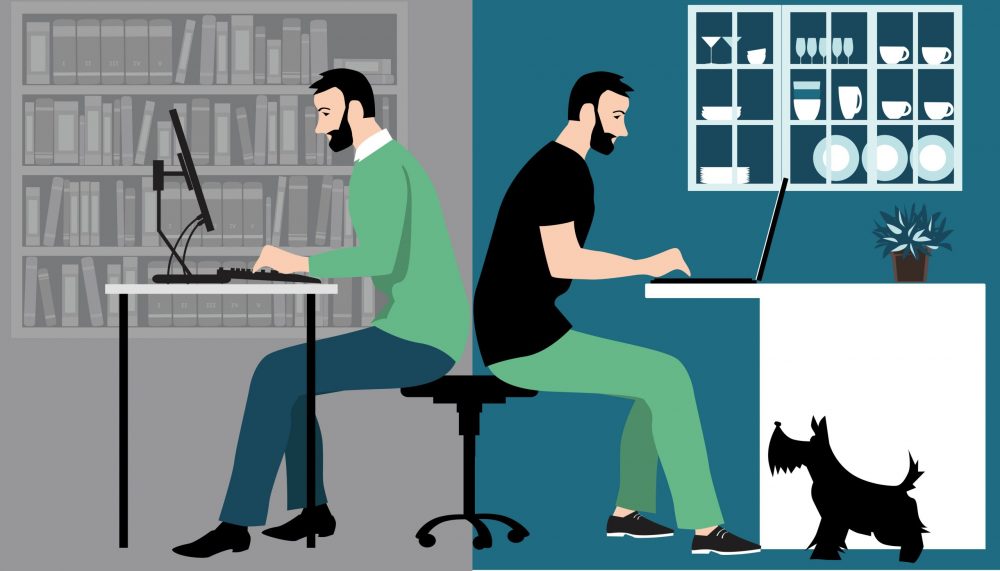Suki Reilly of MovePlan shares three key principles that all generations should follow to ensure career ambitions can be met in the face of new working patterns.

For the first time in contemporary history, we have four generations trying to get to grips with hybrid working. At one end of the spectrum, there are the Boomers (born between 1946 and 1964) who have spent their careers working in the office nine-to-five, five days a week. On the other are the Zoomers, or Gen Z (those born between 1997 and 2012). Gen Z have spent the last three years of their education or the first few years of their careers in a hybrid and often, entirely virtual world.
The growth in flexible working has disrupted the norm and companies are moving towards advocating an employee-first approach that puts wellbeing before presenteeism. Each generation has their own, often personal views on how and where they want to work. Having such a diverse mix of ages in a company can be hugely beneficial, but differences in opinion on where employees should work runs the risk of creating a two-tier workforce – those who value being in the office and those who prefer to work remotely.
The argument many follow is this – how can you get promoted if you only ever appear on a video screen? Those in the office benefit from spending time with their managers, taking feedback and learning from others. There’s a chance that people who prefer the office might gain a promotion simply from being visible and sometimes at the expense of measurable output. The danger of bias against working patterns has become heightened since the pandemic and one that all businesses are grappling with.
Here are three key principles that all generations should follow to ensure career ambitions can be met in the face of new working patterns.

1. Connect and communicate intentionally
The pandemic laid bare the challenges for those who found daily, always-on, digital communication alien to how they had previously interacted with colleagues. The ping of a Slack emoji replaced the friendly in-person greeting at beginning of a day.
According to LinkedIn research, 66% of Gen Z crave a company culture that supports their mental health and wellness. Much of this is about feeling supported, heard, understood, and connected to their work. For Gen Z, they had to quickly learn the importance of intentional communication to build meaningful relationships in the workplace. Rather than waiting for conversations with senior colleagues to happen face-to-face, they had to pick up the phone or send a diary invite to stay in touch.
When they are in the office, Gen Z should utilize their time appropriately. Instead of being tied to a desk on video calls, simple things like eating lunch away from your desk with co-workers helps build relationships and boost morale. Even better if senior leaders can join in. The office of the future will no doubt look more like a buzzing social club than a stark bank of desks.
So as much as it’s in Gen Z’s interest to stay connected, it’s also in the interest of business leaders to listen to the younger generation and encourage them to interact with each other. Simply doing the same is the example that leaders need to set. An invitation to listen in and observe a client meeting or a quick personal call to see how they are doing are both effective ways at keeping communications intentional and flowing in a hybrid world.
Looking for a new career opportunity? Check out Work Design JOBS here!
2. Be patient
With a wealth of communications channels, collaborative software, notifications and interruptions, the tools of work have become more complex in the last few years. When we’re not working physically around each other, it can be difficult to see conflicting deadlines, understand the workloads of others, or even empathize with personal circumstances.
Everyone works differently and this should be explored as a team. In a world where we’re hopping from one meeting to another, managers could promote 25-minute or 45-minute meetings instead of 30- or hour-long meetings respectively. Such an approach simply offers employees the breather they need between meetings. Also worth understanding colleagues’ preferences: some prefer communicating over emails, while others are more comfortable interacting over communications platforms such as Slack or Teams, or even over the phone.
Managers, who are perhaps less used to the frequent digital disruptions must demonstrate a degree of patience. A conversation about career or pay progression is best not done in a rush. Creating the right environment is key. It is the job of a manager to seek out what suits the business and the employee when conducting those all-important conversations.
For the employee, they can’t expect a quick answer over instant messages or provide excuses related to their preferred working style but should dedicate time for self-reflection and think about what works best for their manager too.
A career is a long-term game, so a little patience will go a long way to creating a more engaged and productive workforce.

3. Be open
As we all try to embrace this modern, hybrid workplace, it’s crucial to be open. Ask questions, no matter how small or silly. Searching questions that others feel too scared to ask can be instrumental in building wider workforce understanding of how complex systems work.
Business leaders should be more approachable. A recent survey by TalentLMS and BambooHR found that 77% of Gen Z employees want to work for a company that cares about DE&I. However, this doesn’t mean they expect leaders to have the answers to the big topics of the day. In fact, they value a leader who creates a safe space to talk, and can openly admit if they don’t have all the answers.
However, to get closer to these answers requires open, informal, and inclusive conversations – and of course the right setting. Closed doors, banks of desks, formal settings or hiding behind a video call can make approaching complex issues less appealing. Offices of all shapes and sizes need communal areas, small break out rooms and safe online spaces for employees to openly have a two-way conversation on any topic; be it diversity and inclusion, work output or even a personal situation.
Gen Z is the first generation to build their career in the virtual and now hybrid world. While there’s no rule book, all generations can create successful workplaces by striving for clear and intentional communication, being patient with new ways of working, and seeing vulnerability as a strength rather than a weakness. Four generations working together comes with its challenges but climbing that ladder of career success is just as achievable as before.

